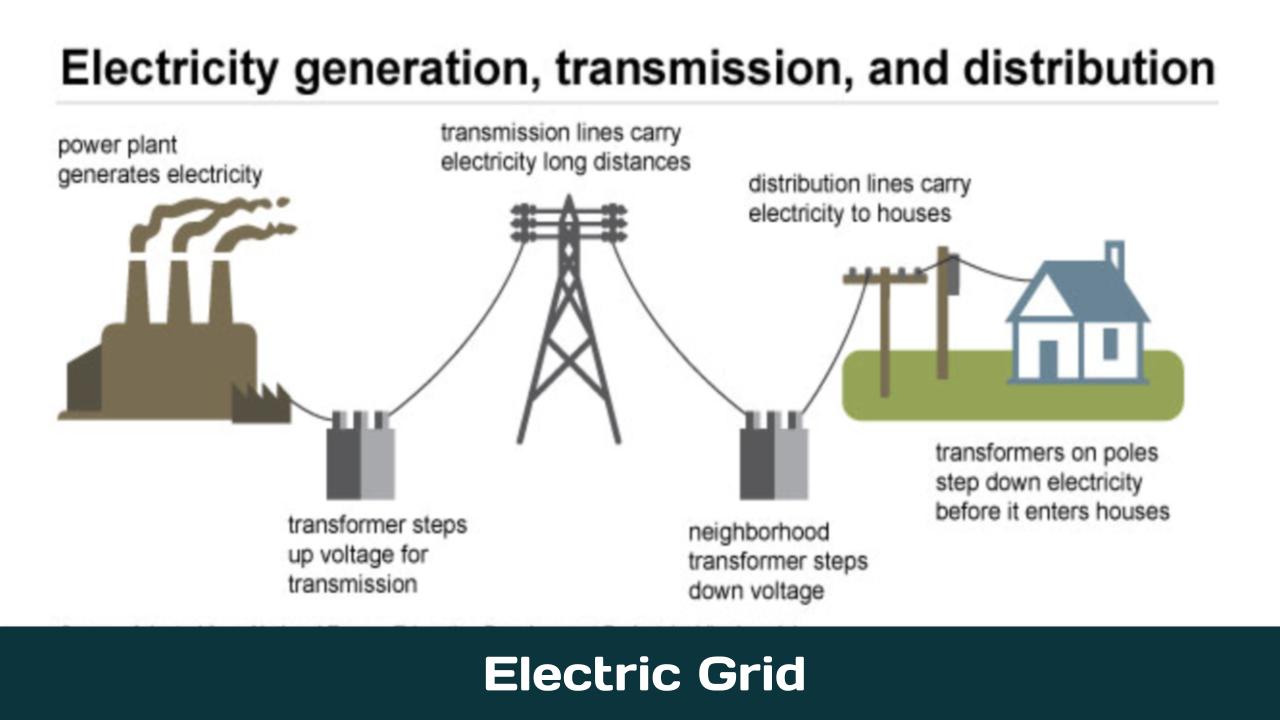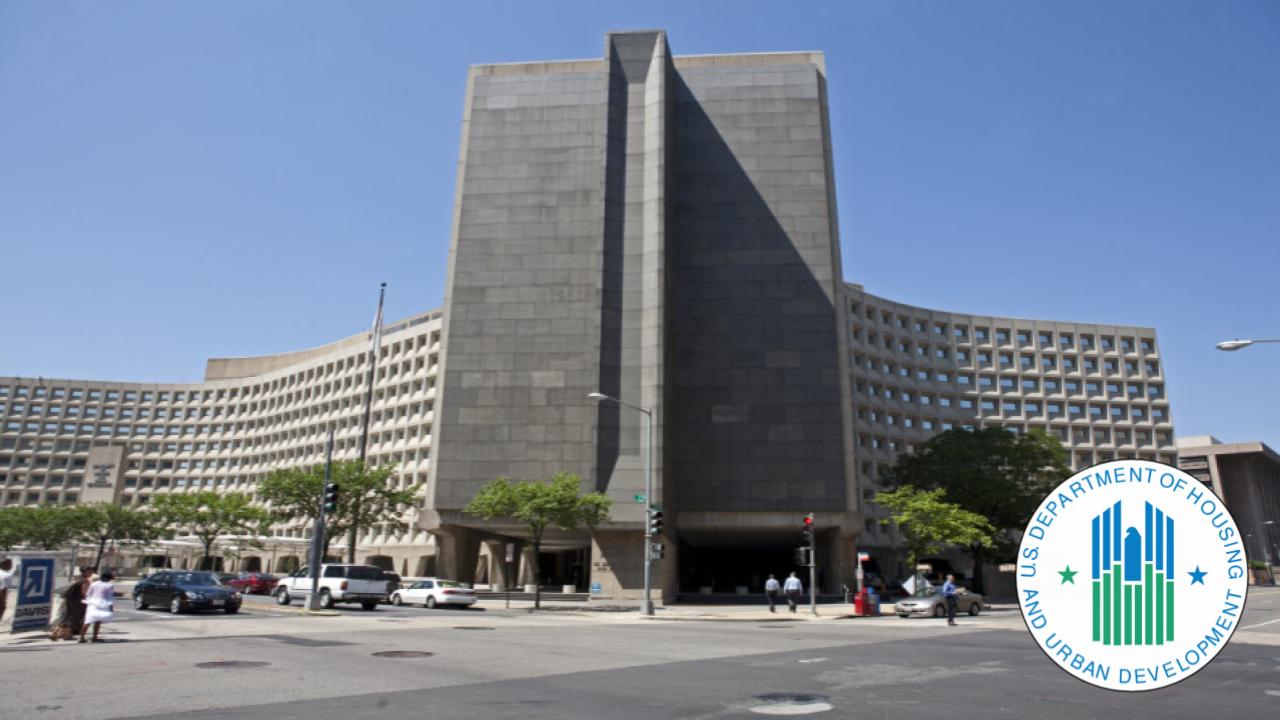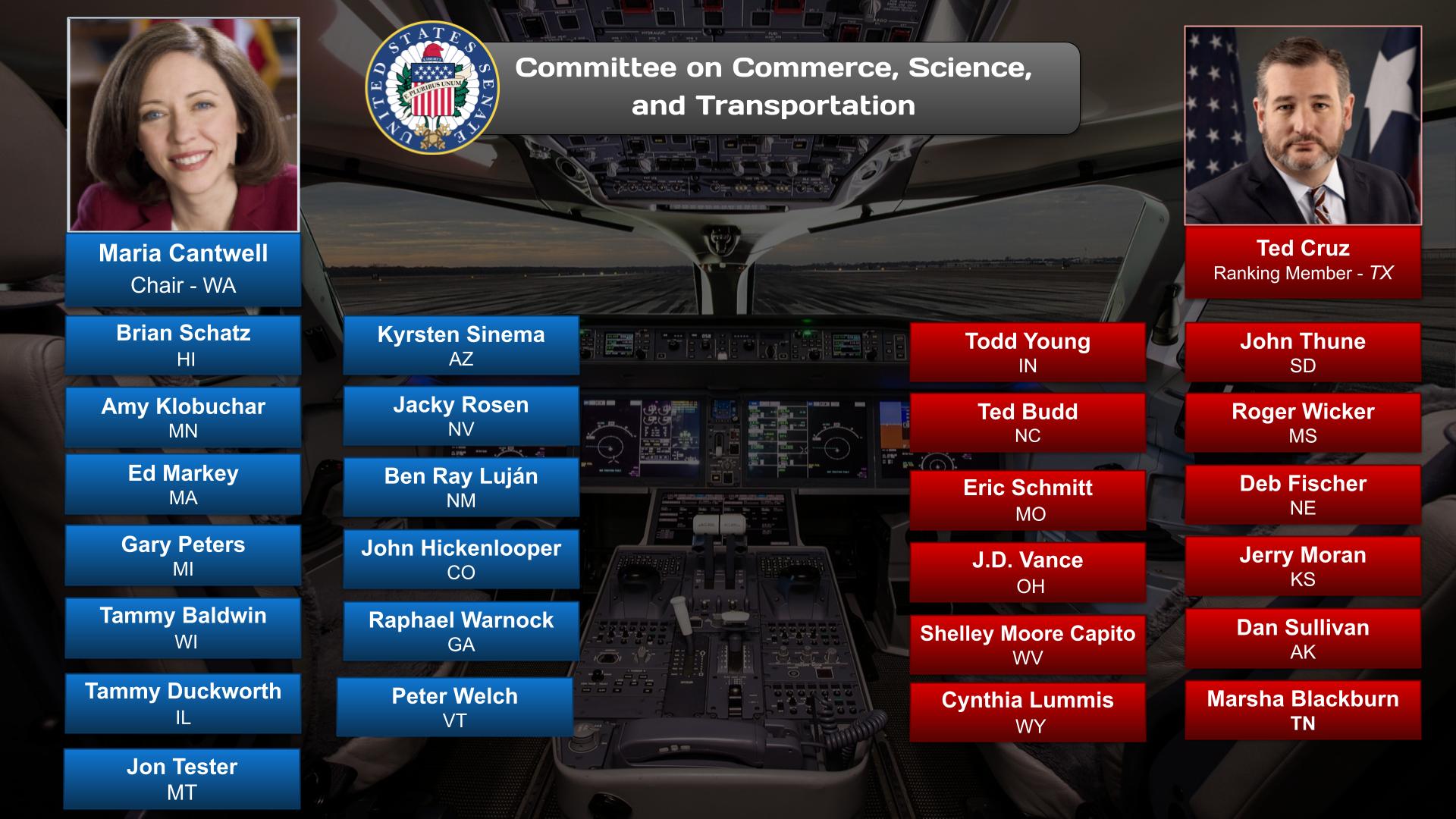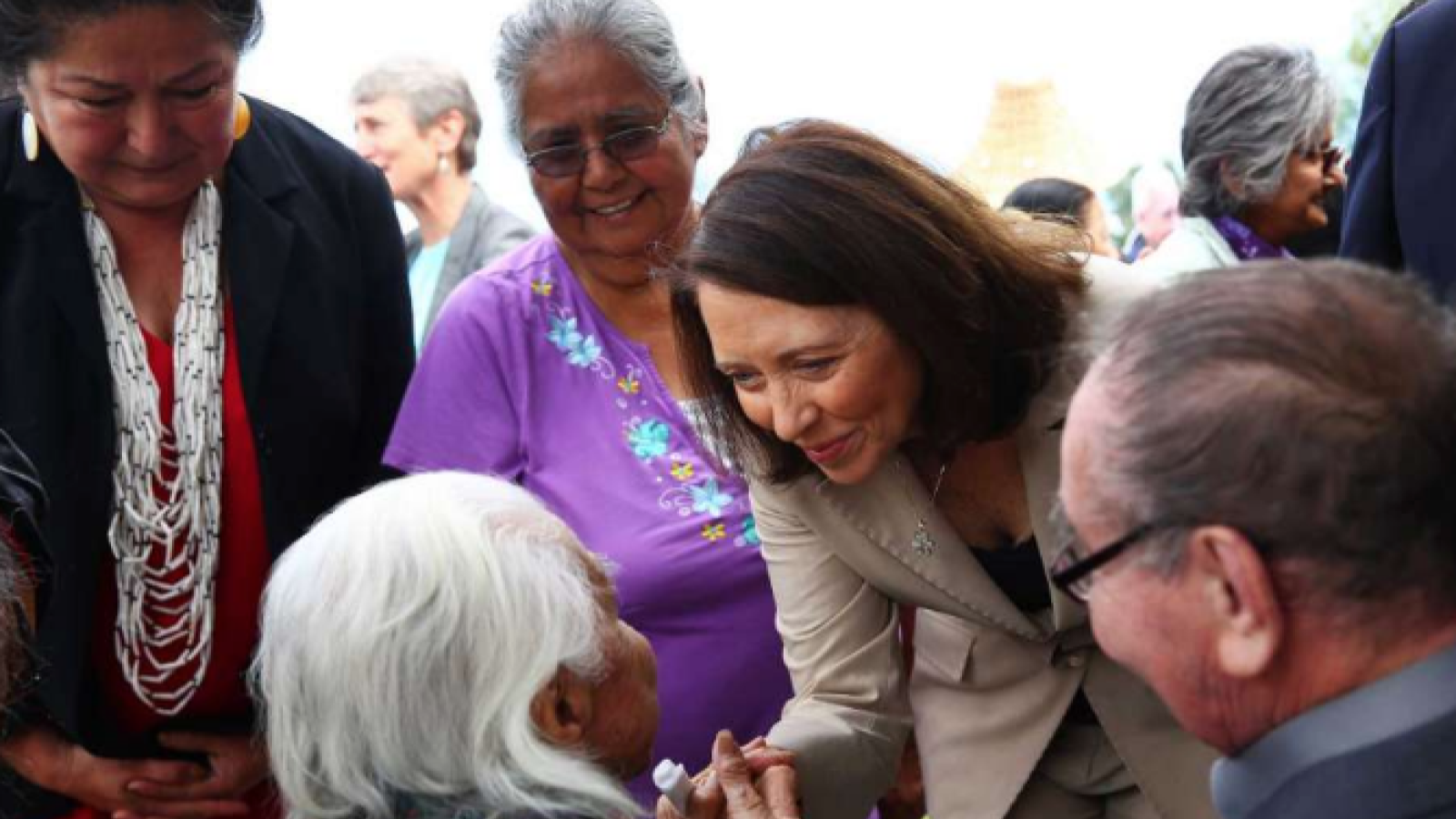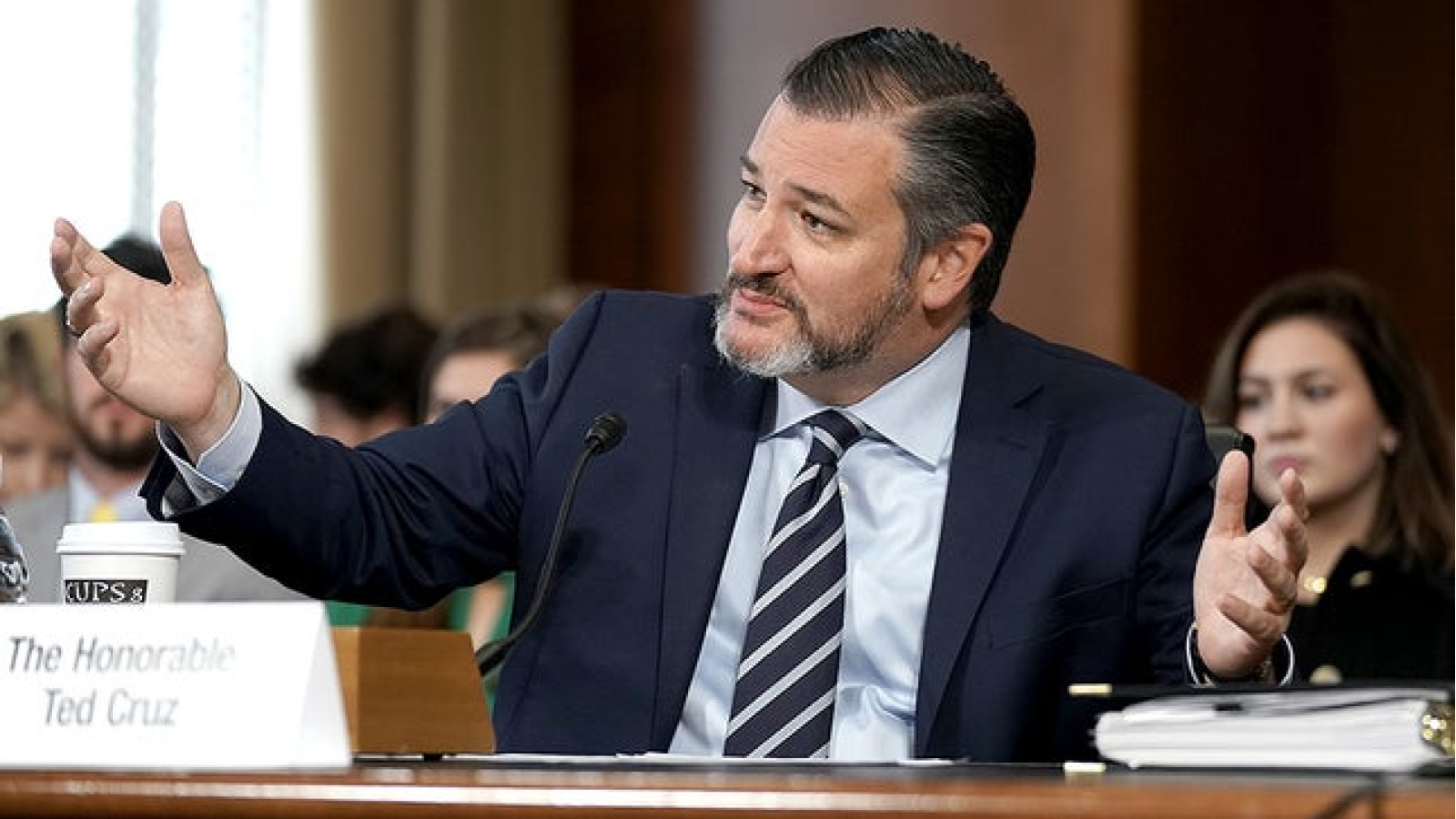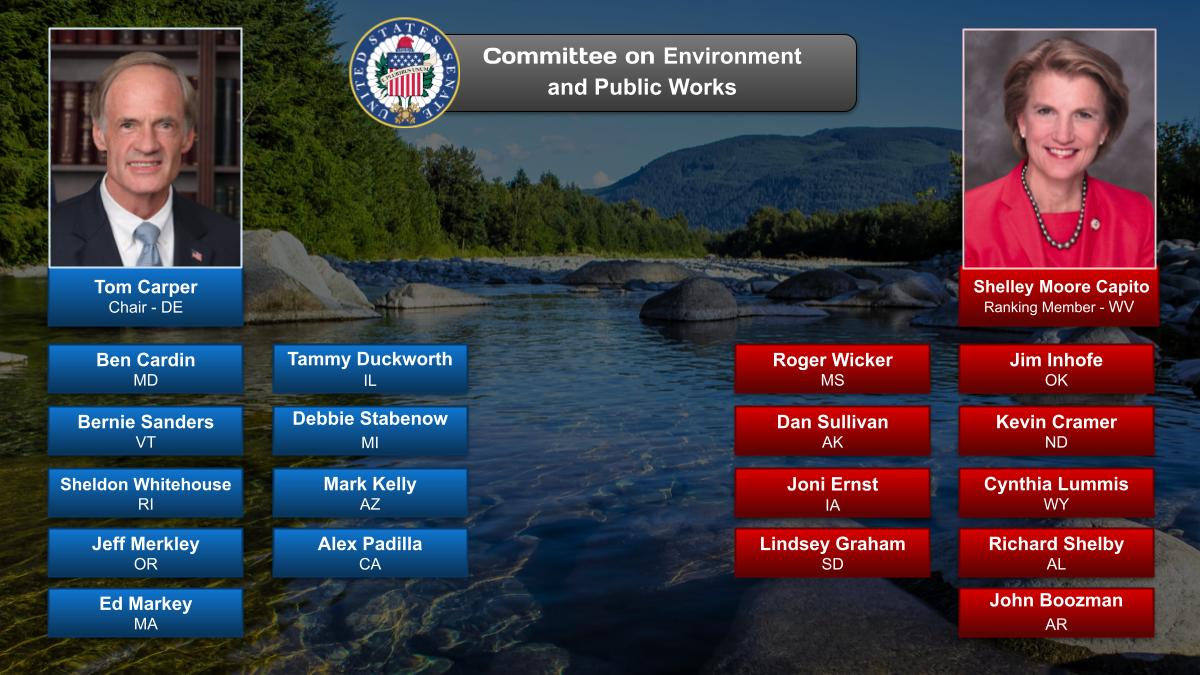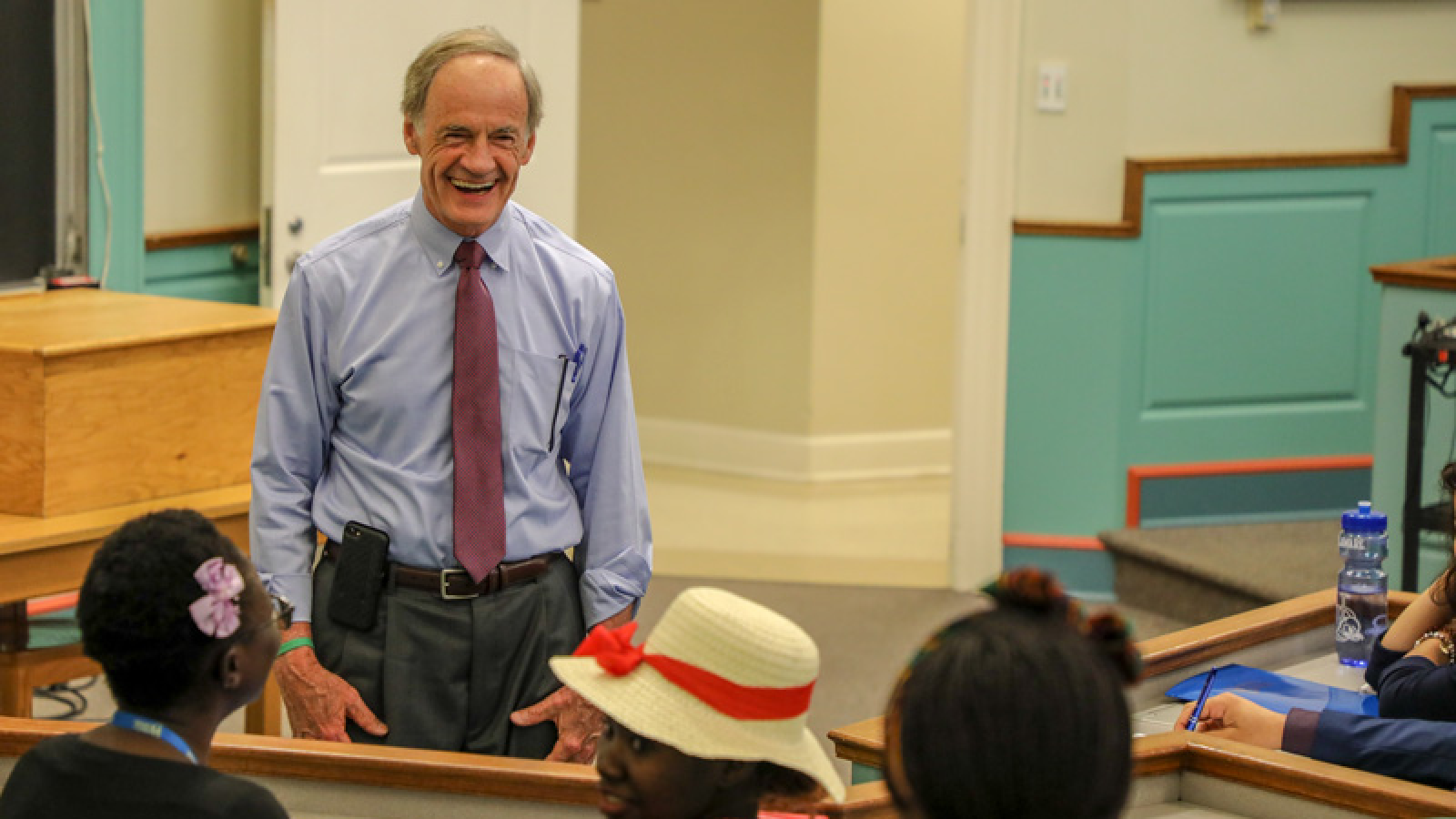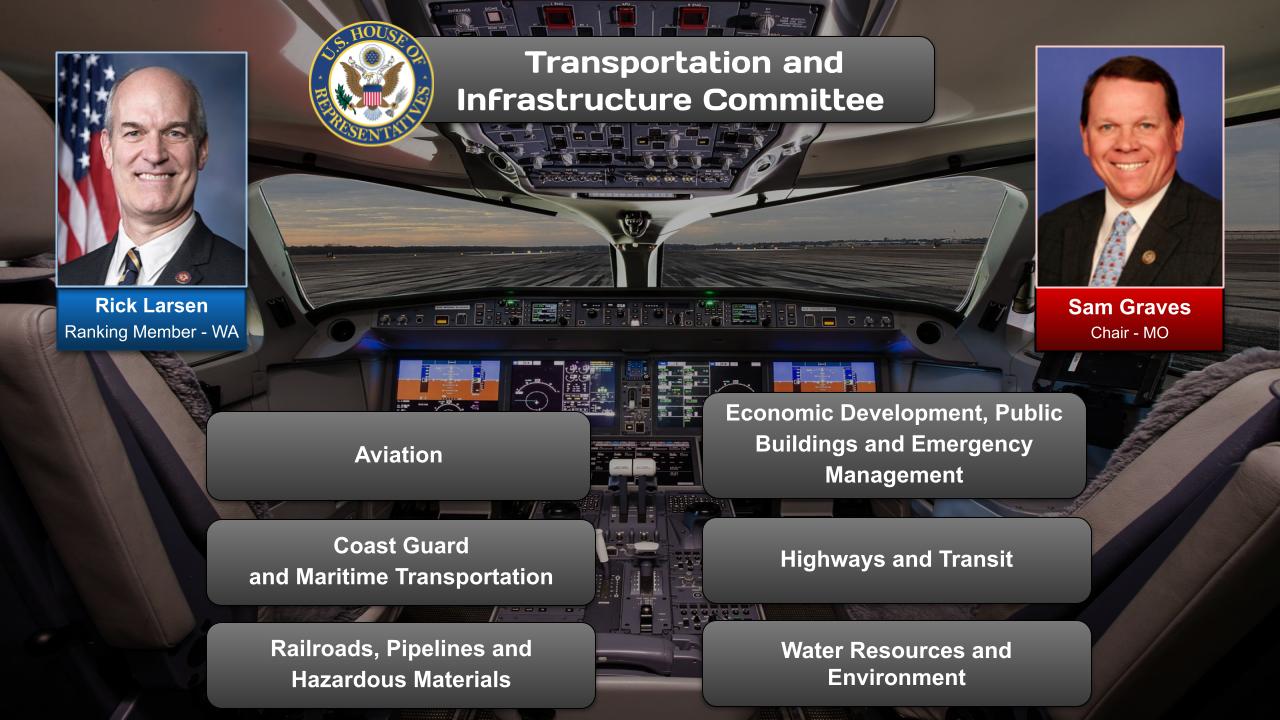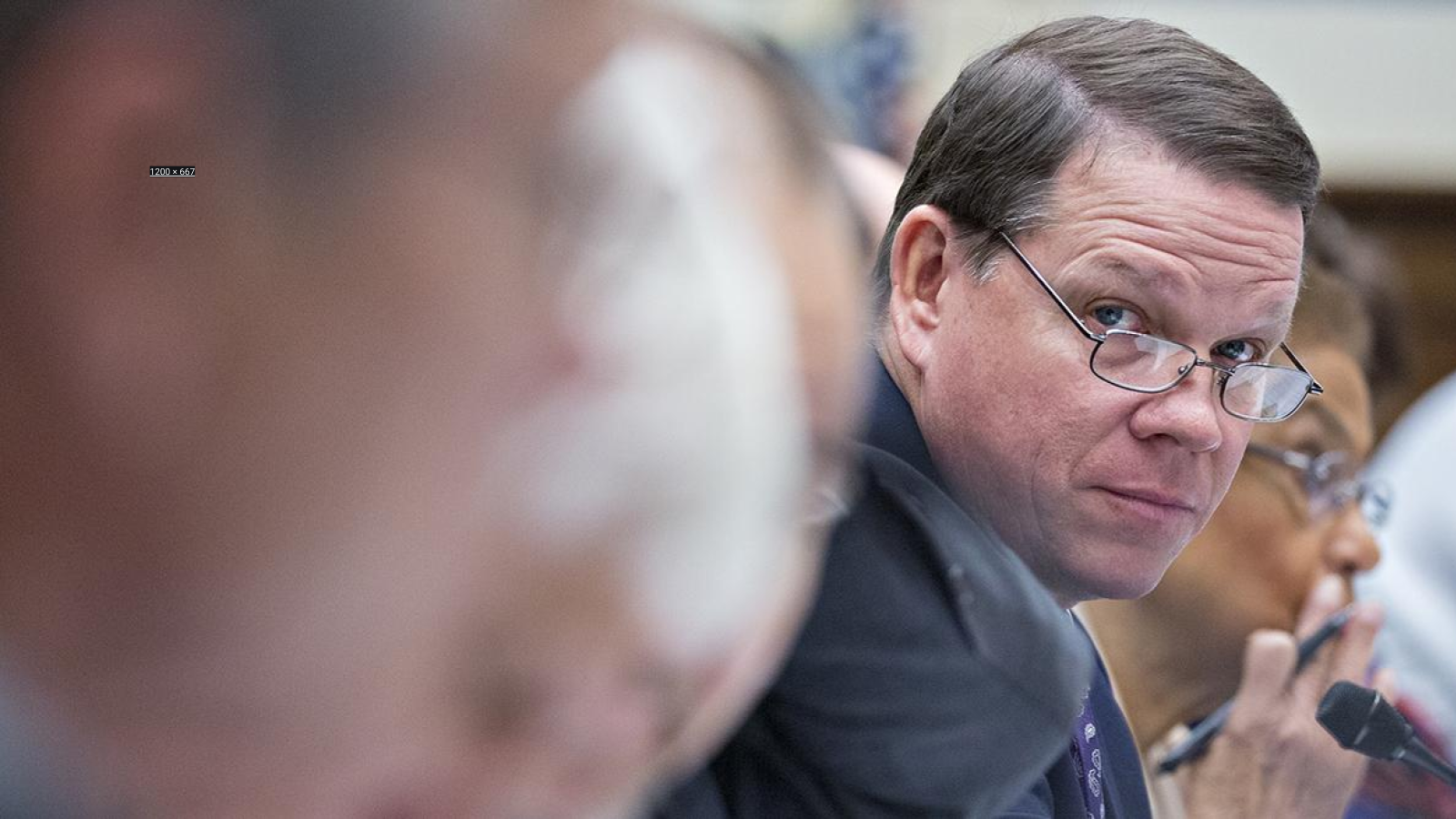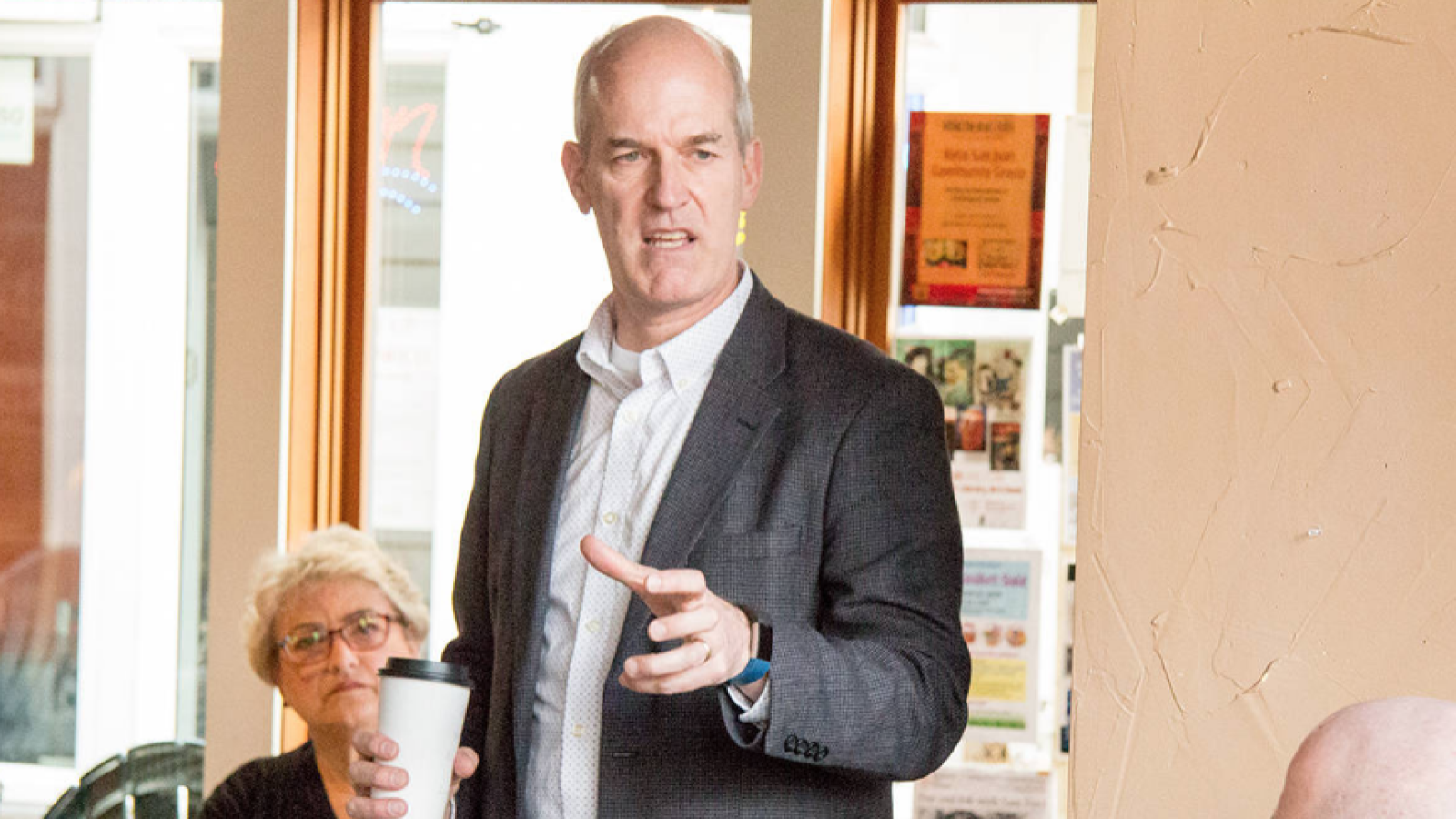Summary
This post on Electric Grid is 1 of 3 issues that US onAir curators are focusing on in the Infrastructure category.
The electrical power grid that powers Northern America is not a single grid, but is instead divided into multiple wide area synchronous grids. The Eastern Interconnection and the Western Interconnection are the largest. Three other regions include the Texas Interconnection, the Quebec Interconnection, and the Alaska Interconnection.
Each region delivers power at a nominal 60 Hz frequency. The regions are not usually directly connected or synchronized to each other, but there exist some HVDC interconnectors. The Eastern and Western grids are connected via seven links that allow 1.32 GW to flow between them. A study by the National Renewable Energy Laboratory found that increasing these interconnections would save energy costs.
OnAir Post: Electric Grid
News
PBS NewsHour – June 29, 2023
A record heat wave, and its connections to climate change, are highlighting again the growing concerns around America’s electrical grid and whether it can withstand the added stress. In Texas, which operates its own electrical grid, power demand hit an all-time high this week. William Brangham discussed more with Michael Webber, a professor of energy resources at the University of Texas.
About
Check the Infrastructure post for the party positions, committees, government agencies related to Electric Grid issues.
Challenges
Aging Infrastructure:
- Many parts of the grid are over 50 years old and prone to failures.
- Deteriorated equipment can lead to blackouts, power surges, and equipment damage.
2. Increasing Demand:
- Growing population and electrification of various sectors (e.g., transportation, heating) are driving up electricity demand.
- The grid needs to be expanded and modernized to meet future needs.
3. Climate Change Impacts:
- Extreme weather events (e.g., hurricanes, wildfires) are becoming more frequent and severe.
- These events can damage grid infrastructure and disrupt power supplies.
4. Cybersecurity Threats:
- The grid is vulnerable to cyberattacks that can disrupt operations and cause widespread outages.
- Protecting critical infrastructure from malicious actors is crucial.
5. Intermittent Renewable Energy Sources:
- The integration of variable renewable energy sources (e.g., solar, wind) presents challenges for grid stability.
- The grid needs to be flexible and adaptable to handle fluctuations in renewable generation.
6. High Costs of Upgrades:
- Upgrading and modernizing the grid is a significant investment.
- Balancing the need for improvements with affordability is crucial to avoid excessive costs for consumers.
7. Regulatory and Policy Barriers:
- Inconsistent policies, regulations, and jurisdictions can hinder grid expansion and modernization efforts.
- Clear and coordinated policies are needed to facilitate infrastructure development.
8. Workforce Shortages:
- The industry faces a shortage of skilled workers to design, operate, and maintain the grid.
- Investing in workforce development is essential to address this gap.
9. Lack of Public Awareness:
- Many consumers are unaware of the challenges facing the grid and its potential impacts.
- Raising public awareness about the importance of grid resilience is crucial for support and funding.
10. Grid Equity:
- Disadvantaged communities often face energy insecurity and power outages.
- Ensuring equitable access to reliable electricity is a social justice issue that needs to be addressed.
Source: Google Search + Gemini + onAir curation
Solutions
Modernize and Secure Transmission Infrastructure:
- Invest in smart grid technologies, such as advanced metering infrastructure (AMI) and distribution automation systems, to enhance grid monitoring, controllability, and resilience.
- Strengthen and expand transmission lines to increase capacity and reduce congestion.
- Implement cybersecurity measures to protect critical grid infrastructure from cyberattacks and other threats.
2. Increase Renewable Energy Generation:
- Accelerate the transition to wind, solar, and hydropower sources to reduce reliance on fossil fuels and lower carbon emissions.
- Integrate renewable energy into the grid through energy storage systems and demand response programs.
- Support research and development of new renewable energy technologies.
3. Enhance Grid Stability and Resilience:
- Develop and implement microgrids and distributed energy resources to provide local backup power and reduce the impact of outages.
- Utilize advanced forecasting and analytics tools to predict grid vulnerabilities and respond to potential disturbances.
- Strengthen grid interconnection and cooperation between utilities and regions to enhance stability.
4. Improve Energy Efficiency:
- Promote energy-efficient appliances, lighting, and building materials to reduce electricity demand.
- Implement smart energy management systems to optimize energy usage and shift peak loads.
- Incentivize consumers to adopt energy-saving behaviors through pricing mechanisms and utility programs.
5. Foster Innovation and Technological Advancement:
- Encourage investment in research and development of new grid technologies, including smart sensors, distributed energy resources, and energy storage systems.
- Support startups and entrepreneurs developing innovative solutions to grid challenges.
- Establish test beds and demonstration projects to facilitate the adoption of new technologies.
6. Strengthen Workforce Development and Training:
- Invest in training and education programs for grid engineers, technicians, and operators to meet the demand for skilled professionals.
- Collaborate with universities and technical schools to develop specialized curricula for grid-related disciplines.
- Provide opportunities for apprenticeships and on-the-job training to nurture the next generation of grid workforce.
7. Enhance Policy and Regulatory Framework:
- Develop policies and regulations that encourage grid modernization, renewable energy deployment, and energy efficiency.
- Streamline permitting processes and provide incentives for investment in grid infrastructure.
- Foster collaboration and coordination among stakeholders, including utilities, regulators, policymakers, and the public.
Source: Google Search + Gemini + onAir curation
Websites
Government Agencies
- Department of Energy (DOE) Office of Electricity: https://www.energy.gov/oe
- Federal Energy Regulatory Commission (FERC): https://www.ferc.gov/
- North American Electric Reliability Corporation (NERC): https://www.nerc.com/
- U.S. Energy Information Administration (EIA): https://www.eia.gov/
Industry Organizations
- American Public Power Association (APPA): https://publicpower.org/
- Edison Electric Institute (EEI): https://www.eei.org/
- National Rural Electric Cooperative Association (NRECA): https://www.nreca.org/
- Solar Energy Industries Association (SEIA): https://www.seia.org/
- American Wind Energy Association (AWEA): https://www.awea.org/
Research and Analysis
- Electric Power Research Institute (EPRI): https://www.epri.com/
- Massachusetts Institute of Technology (MIT) Energy Initiative: https://energy.mit.edu/
- National Renewable Energy Laboratory (NREL): https://www.nrel.gov/
- Lawrence Berkeley National Laboratory (LBNL): https://www.lbl.gov/
Policy Resources
- Clean Energy States Alliance (CESA): https://cesa.org/
- U.S. Climate Alliance: https://www.usclimatealliance.org/
- Center for Climate and Energy Solutions (C2ES): https://www.c2es.org/
- American Council on Renewable Energy (ACORE): https://www.acore.org/
News and Information
- Utility Dive: https://www.utilitydive.com/
- Renewables Now: https://renewablesnow.com/
- Greentech Media (GTM): https://www.greentechmedia.com/
- Energy Central News: https://www.energycentral.com/news
Source: Google Search + Gemini + onAir curation
Legislation
See Congress.Gov links below for latest updates and for learning what bills your representatives are sponsoring.
Laws
Source: Google Search + Gemini + onAir curation
Energy Policy Act of 2005 (EPAct)
- Established the Smart Grid Task Force, which recommended a modernized and reliable electric grid.
- Provided funding for smart grid research and development, including advanced metering infrastructure (AMI) and cybersecurity.
American Recovery and Reinvestment Act of 2009 (ARRA)
- Included $90 billion for renewable energy and energy efficiency programs, including investments in smart grid technology.
- Funded grants for smart grid demonstration projects and grid modernization.
Energy Independence and Security Act of 2007 (EISA)
- Established energy efficiency standards for buildings and appliances.
- Promoted renewable energy sources, including tax incentives for solar and wind power.
- Mandated the development of a National Smart Grid Interoperability Framework.
Cybersecurity and Infrastructure Security Agency Act of 2018 (CISA)
- Created the Cybersecurity and Infrastructure Security Agency (CISA), responsible for enhancing the nation’s cybersecurity, including the electric grid.
- Provided funding for cybersecurity initiatives and training.
Infrastructure Investment and Jobs Act (IIJA)
- Appropriated billions of dollars for electric grid modernization, including:
- Smart grid investments
- Grid resilience and cybersecurity
- Expansion of renewable energy transmission
Department of Energy (DOE) Authorization Bills
- Provide ongoing funding and direction to DOE programs related to electric grid modernization, including:
- Office of Electricity Delivery and Energy Reliability
- Cybersecurity for Energy Delivery Systems
- Grid Modernization and Smart Grid
Other Notable Laws:
- Federal Power Act (1935): Regulates interstate electric power and natural gas transmission.
- Public Utility Holding Company Act (1935): Regulates the financial structure and operations of electric utilities.
- North American Electric Reliability Corporation (NERC) Act (2003): Authorizes the creation of NERC, a nonprofit organization responsible for developing and enforcing reliability standards for the electric grid.
New Bills in 2023-2024
Source: Google Search + Gemini + onAir curation
Sampling of Bills
H.R.2875 — Grid Reliability and Resiliency Improvements Act
This bill directs the North American Electric Reliability Organization to biennially submit a report to Congress that identifies (1) risks to the long-term reliability of the electric grid and electricity generation, (2) whether increased electricity generation from natural gas and increased natural gas transportation is essential to the reliability of the electric grid, and (3) other related risks
Sponsor: Balderson, Troy [Rep.-R-OH-12] (Introduced 04/26/2023)
Cosponsors: (2)
Committees: House – Energy and Commerce
Latest Action: House – 04/28/2023 Referred to the Subcommittee on Energy, Climate and Grid Security.
Grid Resilience and Modernization Act of 2023
- Sponsors: Sens. Joe Manchin (D-WV) and Lisa Murkowski (R-AK)
- Key Provisions:
- Provides $50 billion in grants and loans for modernizing and hardening the electric grid against cyber and physical threats.
- Establishes a national cyber incident response plan for the electric grid.
- Creates a new tax credit for investments in distributed energy resources.
2. Energy Security and Infrastructure Act of 2023
- Sponsors: Reps. Bobby Rush (D-IL) and David McKinley (R-WV)
- Key Provisions:
- Invests $100 billion in transitioning the electric grid to clean energy sources.
- Authorizes the Department of Energy to develop and implement a national smart grid strategy.
- Sets new reliability standards for the electric grid.
3. Electric Grid Modernization Act of 2024
- Sponsors: Sen. Ron Wyden (D-OR) and Rep. Greg Walden (R-OR)
- Key Provisions:
- Establishes a national electric grid modernization plan.
- Provides funding for research and development of new grid technologies.
- Creates a new regulatory framework for the electric grid.
4. Cybersecurity and Infrastructure Security Agency (CISA) Enhancement Act
- Sponsors: Sen. Kirsten Gillibrand (D-NY) and Rep. John Katko (R-NY)
- Key Provisions:
- Expands the authority and resources of CISA to respond to cyber threats against the electric grid.
- Requires the electric industry to report cyber incidents to CISA.
- Creates a new grant program to support state and local governments in enhancing their cybersecurity capabilities.
5. Energy Efficiency and Climate Change Act of 2024
- Sponsors: Sen. Tina Smith (D-MN) and Rep. Debbie Dingell (D-MI)
- Key Provisions:
- Sets a national goal of 100% clean electricity by 2035.
- Provides funding for energy efficiency programs and renewable energy projects.
- Establishes a new tax credit for energy storage systems.
6. Critical Infrastructure Protection Act of 2024
- Sponsors: Sen. Marco Rubio (R-FL) and Rep. Michael McCaul (R-TX)
- Key Provisions:
- Strengthens protections against physical attacks on critical infrastructure, including the electric grid.
- Expands the role of the National Guard in responding to infrastructure attacks.
- Creates new penalties for individuals and organizations involved in infrastructure sabotage.
Committees, Agencies, & Programs
Committees
Source: Google Search + Gemini + onAir curation
House of Representatives
- Committee on Energy and Commerce:
- Subcommittee on Energy
- Subcommittee on Environment and Climate Change
- Committee on Science, Space, and Technology:
- Subcommittee on Energy
Senate
- Committee on Energy and Natural Resources:
- Subcommittee on Energy
- Subcommittee on Public Lands, Forests, and Mining
- Committee on Homeland Security and Governmental Affairs:
- Subcommittee on Disaster Response and Public Safety
Joint Committees
- Joint Committee on Infrastructure:
- Subcommittee on Energy
- Joint Economic Committee:
- Task Force on American Energy Security
Additional Committees with Jurisdiction
- House Committee on Appropriations:
- Subcommittee on Energy and Water Development
- Senate Committee on Appropriations:
- Subcommittee on Energy and Water Development
- House Committee on Armed Services:
- Subcommittee on Strategic Forces
- Senate Committee on Armed Services:
- Subcommittee on Cybersecurity and Emerging Technologies
Other Relevant Committees
- House Select Committee on the Climate Crisis
- Senate Committee on Climate Change and Sustainable Development
Government Agencies
Source: Google Search + Gemini + onAir curation
- Department of Energy (DOE): The DOE is responsible for developing and implementing policies and programs to ensure the reliability, affordability, and sustainability of the US electric grid. The DOE’s Office of Electricity oversees a range of programs, including research and development on new technologies, grid modernization, and cybersecurity.
- Federal Energy Regulatory Commission (FERC): FERC is an independent agency that regulates the interstate transmission of electricity and natural gas. FERC also oversees the operation of the nation’s wholesale electricity markets.
- North American Electric Reliability Corporation (NERC): NERC is a non-profit organization that develops and enforces reliability standards for the US electric grid. NERC also monitors the grid’s performance and investigates major outages.
- Cybersecurity and Infrastructure Security Agency (CISA): CISA is responsible for protecting the nation’s critical infrastructure, including the electric grid, from cyber attacks. CISA provides guidance and assistance to utilities and other stakeholders on how to improve their cybersecurity.
- National Institute of Standards and Technology (NIST): NIST develops technical standards and guidelines for a wide range of industries, including the electric grid. NIST’s work helps to ensure the interoperability and security of the grid.
Programs & Initiatives
Source: Google Search + Gemini + onAir curation
Department of Energy (DOE)
- Office of Electricity (OE): Leads DOE’s efforts to modernize and secure the electric grid.
- Grid Modernization Initiative (GMI): Supports research, development, and deployment of innovative grid technologies.
- Advanced Grid Modeling and Simulation (AGMS): Develops tools to accurately model and simulate grid behavior.
- Cybersecurity Vulnerability Identification and Remediation (CVIR): Identifies and addresses cybersecurity threats to the grid.
Federal Energy Regulatory Commission (FERC)
- Resilience Standards for the Bulk Power System (OE-472): Establishes mandatory reliability standards to protect the grid against physical and cyber threats.
- Electric System Reliability Organization (ESRO): Oversees the development and implementation of grid reliability standards.
National Institute of Standards and Technology (NIST)
- Framework for Improving Critical Infrastructure Cybersecurity (NIST Cybersecurity Framework): Provides guidance for organizations to improve cybersecurity practices, including those related to the electric grid.
Other Programs and Initiatives
- Smart Grid Investment Grant (SGIG): Provides funding for the deployment of smart grid technologies.
- Energy Efficiency and Conservation Block Grant (EECBG): Supports programs that promote energy efficiency, including measures that reduce peak demand.
- Interagency Task Force on Smart Grid Interoperability Standards (NIST IGTF): Facilitates the development of interoperable smart grid standards.
- GridModernization Lab Consortium (GMLC): A collaboration between academic institutions and private industry to advance grid modernization research.
Key Goals and Priorities
- Improve grid reliability and resilience against physical and cyber threats.
- Increase grid flexibility and adaptability to accommodate renewable energy sources.
- Enhance grid efficiency to reduce energy consumption and costs.
- Promote innovation and technological advancements to modernize the electric grid.
More Information
Nonpartisan Organizations
Source: Google Search + Gemini + onAir curation
Government Organizations:
- Congressional Research Service (CRS): Provides independent research and analysis to Congress on issues including the electric grid.
- Department of Energy (DOE): Develops and implements policies to strengthen the electric grid, including research and funding for grid modernization.
- Federal Energy Regulatory Commission (FERC): Regulates the interstate wholesale electric market and provides oversight of bulk power system reliability.
- North American Electric Reliability Corporation (NERC): Mandated by FERC to develop and enforce reliability standards for the electric grid.
Non-Governmental Organizations:
- American Council for an Energy-Efficient Economy (ACEEE): Promotes energy efficiency and sustainable energy policies, including grid modernization.
- Center for American Progress (CAP): A liberal think tank that advocates for clean energy solutions and grid resilience.
- Energy Innovations: Let’s Solve Climate Change: A non-profit organization that provides research and analysis on clean energy technologies, including grid modernization.
- GridWise Alliance: An industry-led initiative that develops and promotes best practices for grid modernization and reliability.
- Institute for Electric Innovation: A research and policy organization focused on accelerating the transition to a clean and reliable electric grid.
- Public Service Commission for Electricity (PSCE): A coalition of state public utility commissions that works to ensure grid reliability and affordability.
Utilities and Energy Companies:
- Edison Electric Institute (EEI): The association of investor-owned electric utilities in the United States.
- National Rural Electric Cooperative Association (NRECA): The association of electric cooperatives that provide electricity to rural communities.
- Utilities United Against Scams (UUAS): A coalition of utilities and energy companies working to combat energy fraud and scams.
Partisan Organizations
Source: Google Search + Gemini + onAir curation
Democratic
- American Council on Renewable Energy (ACORE): Advocates for clean energy policies, including grid modernization and renewable energy integration.
- Center for American Progress (CAP): Conducts research and promotes policies on energy and environmental issues, including grid resilience and cybersecurity.
- Clean Energy for All: Focuses on equitable access to clean energy, including affordable grid upgrades and renewable energy infrastructure.
- Environmental Defense Fund (EDF): Supports policies to reduce greenhouse gas emissions and transition to a clean energy economy, emphasizing grid decarbonization.
Republican
- American Coalition for Clean Coal Electricity (ACCCE): Represents coal-fired power plants and advocates for policies supporting coal-based generation and grid reliability.
- American Public Power Association (APPA): Association of public utilities that provide electricity and advocates for policies that promote grid affordability and reliability.
- Edison Electric Institute (EEI): Represents investor-owned electric utilities and advocates for policies that support grid modernization, cybersecurity, and resilient infrastructure.
- Nuclear Energy Institute (NEI): Represents nuclear power plants and advocates for policies that support nuclear energy as a reliable and carbon-free generation source.
“North American power transmission grid” (Wiki)
Contents


The electrical power grid that powers Northern America is not a single grid, but is instead divided into multiple wide area synchronous grids.[1] The Eastern Interconnection and the Western Interconnection are the largest. Three other regions include the Texas Interconnection, the Quebec Interconnection, and the Alaska Interconnection. Each region delivers power at a nominal 60 Hz frequency. The regions are not usually directly connected or synchronized to each other, but there exist some HVDC interconnectors. The Eastern and Western grids are connected via seven links that allow 1.32 GW to flow between them. A study by the National Renewable Energy Laboratory found that increasing these interconnections would save energy costs.[2]
History
In the United States in the 1920s, utilities formed joint operations to share peak load coverage and backup power. In 1934, with the passage of the Public Utility Holding Company Act, electric utilities were recognized as public goods of importance and were given outlined restrictions and regulatory oversight of their operations.
From 1967, the East and West interconnections were directly connected together. However, the AC ties did not have high capacity and were subject to oscillations, and so their connection proved unreliable. In 1975 the AC ties were disconnected, because DC ties were found to work more reliably.[1]
The Energy Policy Act of 1992 required transmission line owners to allow electric generation companies open access to their network[3][4] and led to a restructuring of how the electric industry operated in an effort to create competition in power generation. No longer were electric utilities built as vertical monopolies, where generation, transmission and distribution were handled by a single company. Now, the three stages could be split among various companies in an effort to provide fair accessibility to high voltage transmission.[5]: 21 The Energy Policy Act of 2005 allowed incentives and loan guarantees for alternative energy production and to advance innovative technologies that avoided greenhouse emissions.
Description
There are two major wide area synchronous grids in North America: the Eastern Interconnection and the Western Interconnection. In addition, there are three minor power grids in North America: the Alaska Interconnection, the Texas Interconnection, and the Quebec Interconnection. The Eastern, Western and Texas Interconnections are tied together at various points with DC interconnects allowing electrical power to be transmitted throughout the contiguous U.S., Canada and parts of Mexico. The transmission grids are operated by transmission system operators (TSOs), not-for profit companies that are typically owned by the utilities in their respective service areas, where they coordinate, control and monitor the operation of the electrical power system. TSOs are obliged to provide nondiscriminatory transmission access to electricity generators and customers. TSOs can be of two types: Independent System Operators (ISOs) and Regional Transmission Organizations (RTOs). The former operate within a single state, and the latter cover wider areas crossing state borders.[citation needed]
In 2009 there were four RTOs in the U.S.:[citation needed]
- ISO New England (ISO-NE, which is an RTO despite its name);
- Midcontinent Independent System Operator (MISO);
- PJM Interconnection in the Mid-Atlantic region; and
- Southwest Power Pool (SPP) covering Oklahoma, Kansas and parts of Arkansas, Missouri, Texas and New Mexico.
There are also three ISOs:
- California Independent System Operator (California ISO);
- New York Independent System Operator (NYISO);
- Electric Reliability Council of Texas (ERCOT, an ISO).
RTOs are similar but not identical to the nine Regional Reliability Councils associated in the North American Electric Reliability Corporation (NERC), a nonprofit entity that is in charge of improving the reliability and security of the bulk power system in the U.S., Canada and the northern part of Baja California in Mexico. The members of the Regional Reliability Councils include private, public and cooperative utilities, power marketers and final customers. The Regional Reliability Councils are:
The FERC distinguishes between 10 power markets in the U.S., including the seven for which RTOs have been established, as well as:
- Northwest
- Southwest (covering Arizona, most of New Mexico and Colorado)
- Southeast[6]
ISOs and RTOs were established in the 1990s, when states and regions established wholesale competition for electricity.
North American Electric Reliability Corporation
The North American Electric Reliability Corporation (NERC) is a nonprofit corporation based in Atlanta, Georgia, and formed on March 28, 2006, as the successor to the National Electric Reliability Council (also known as NERC), which formed in the wake of the first large-scale blackout in November of 1965. The original NERC was formed on June 1, 1968, by the electric utility industry to promote the reliability and adequacy of bulk power transmission in the electric utility systems of North America. NERC’s mission is to “ensure the reliability of the North American bulk power system.”[7]
NERC oversees eight regional reliability entities and encompasses all of the interconnected power systems of the contiguous United States, Canada and a portion of Baja California in Mexico.
NERC’s major responsibilities include working with all stakeholders to develop standards for power system operation, monitoring and enforcing compliance with those standards, assessing resource adequacy, and providing educational and training resources as part of an accreditation program to ensure power system operators remain qualified and proficient. NERC also investigates and analyzes the causes of significant power system disturbances in order to help prevent future events.
Interconnections
Eastern Interconnection
The Eastern Interconnection is one of the two major alternating-current (AC) electrical grids in North America.
All of the electric utilities in the Eastern Interconnection are electrically tied together during normal system conditions and operate at a synchronized frequency operating at an average of 60 Hz. The Eastern Interconnection reaches from Saskatchewan eastward to the Atlantic coast (excluding Quebec), south to Florida, and back west to the foot of the Rockies (excluding most of Texas). The USA part has 700 GW of generating capacity.[2]
Interconnections can be tied to each other via high-voltage direct current power transmission lines (DC ties), or with variable-frequency transformers (VFTs), which permit a controlled flow of energy while also functionally isolating the independent AC frequencies of each side. The Eastern Interconnection is tied to the Western Interconnection with seven DC ties (ca. 200 MW each) in the US[8][9] and one in Canada, to the Texas Interconnection with two DC ties, and to the Quebec Interconnection with four DC ties and a VFT.
In 2009, the Tres Amigas SuperStation was planned to connect the Eastern, Western and Texas Interconnections via three 5 GW superconductor links.[10] As of 2021 it has not started construction.
Western Interconnection
The Western Interconnection is the other major alternating current (AC) power grid in North America.
All of the electric utilities in the Western Interconnection are electrically tied together during normal system conditions and operate at a synchronized frequency of 60 Hz. The Western Interconnection stretches from Western Canada south to Baja California in Mexico, reaching eastward over the Rockies to the Great Plains. The USA part has 250 GW of generating capacity.[2]
Interconnections can be tied to each other via high-voltage direct current power transmission lines (DC ties) as well as containing internal DC connections such as the north-south Pacific DC Intertie, or with variable-frequency transformers (VFTs), which permit a controlled flow of energy while also functionally isolating the independent AC frequencies of each side. There are seven DC ties (ca. 200 MW each) to the Eastern Interconnection in the US[8][9] and one in Canada. There are proposals to add four additional HVDC ties.[11] It is not tied to the Alaska Interconnection.
Texas Interconnection
The Texas Interconnection is one of the three minor alternating current (AC) power grids in North America.
All of the electric utilities in the Texas Interconnection are electrically tied together during normal system conditions, and they operate at a synchronized frequency operating at an average of 60 Hz. The Texas Interconnection covers most of the state of Texas.
Interconnections can be tied to each other via high-voltage direct current power transmission lines (DC ties), or with variable-frequency transformers (VFTs), which permit a controlled flow of energy while also functionally isolating the independent AC frequencies of each side. The Texas Interconnection is tied to the Eastern Interconnection with two DC ties, and has a DC tie and a VFT to non-NERC systems in Mexico. There is one AC tie switch in Dayton, Texas that has been used only one time in its history (after Hurricane Ike).
Quebec Interconnection
The Quebec Interconnection is one of the three minor alternating-current (AC) electrical grids in North America.
The Quebec Interconnection covers all of the Province of Quebec and operates at an average system frequency of 60 Hz. It connects 18 systems in the US and Canada to one electric utility company: Hydro-Québec. It is operated as an independent AC grid for physical reasons.[12]
The Quebec Interconnection is tied to the Eastern Interconnection with four high-voltage direct current power transmission lines (DC ties), and with one variable-frequency transformers (VFTs) line, which isolate the unsynchronized AC frequencies of each side.
Alaska Interconnection
The Alaska Interconnection is one of the three minor alternating-current (AC) electrical grids in North America.
It is composed of two grids isolated from each other as well as from the rest of North American grids, so there is not actually, physically, an Alaska Interconnection.
Proposed improvements
Thirty-seven states plus the District of Columbia took some action to modernize electric grids in the first quarter of 2017, according to the North Carolina Clean Energy Technology Center. The states did so to make electricity systems “more resilient and interactive”. The most common actions that states took were “advanced metering infrastructure deployment” (19 states did this), smart grid deployment and “time-varying rates for residential customers”.[13]
Legislatively, in the first quarter of the year 82 relevant bills were introduced in different parts of the United States. At the close of the quarter, most of the bills remained pending. For example, legislators in Hawaii introduced a bill that would create an energy storage tax credit. In California, the state Senate had a bill that would “create a new energy storage rebate program”.[13]
In August 2018, Advanced Energy Economy (AEE) and Citizens for Responsible Energy Solutions Forum (CRES Forum) published a policy paper that gave five recommendations on ways to modernize the U.S. electric power grid. These recommendations are to streamline the federal permit process for advanced energy projects; encourage grid planners to consider alternatives to investment in transmission; allow energy storage and energy efficiency to compete with additional energy generation; allow large customers to choose their own sources of electricity; and allow utilities and consumers to benefit from cloud computing software.[14]
In 2019, NREL calculated that new transmission between the grids could benefit consumers by a factor of 2.5 relative to the transmission investment.[15][2]
A 2022 study by National Grid plc and Hitachi Energy indicates that installing charging infrastructure for fleet electrification will require location-specific upgrades to the US electrical grid.[16][17]
See also
References
- ^ a b When the Grid Was the Grid:The History of North America’s Brief Coast-to-Coast Interconnected Machine -By JULIE COHN
- ^ a b c d Howland, Ethan (19 October 2021). “Boosting transmission between East, West grids will lower costs: NREL”. Utility Dive. Archived from the original on 20 October 2021.
- ^ Borberly, A. and Kreider, J. F. (2001). Distributed Generation: The Power Paradigm for the New Millennium. CRC Press, Boca Raton, Florida. 400 pgs.
- ^ Mazer, A. (2007). Electric Power Planning for Regulated and Deregulated Markets. John Wiley and Sons. Hoboken, NJ.
- ^ . (2001). Glover J. D., Sarma M. S., Overbye T. J. (2010) Power System and Analysis 5th Edition. Cengage Learning. Pg 10.
- ^ FERC:Electric Power Markets: National Overview
- ^ “Home”. nerc.com.
- ^ a b “Connecting the Grid: DC Ties Serve Critical Role”. www.nmppenergy.org. NMPP Energy (Nebraska Municipal Power Pool). 2020-09-01. Retrieved 2020-12-07.
HVDC ties in: Miles City, MT; Rapid City, SD; Stegall, NE; Sidney, NE; Lamar, CO; Clovis, NM; Artesia, NM
- ^ a b Billy J. Robert: U.S. Transmission System and B2B HVDC Ties, NREL, 2017-01-12
- ^ High-Temp Superconductors To Connect Power Grids
- ^ Visualizing The U.S. Electric Grid
- ^ “Control Area Concepts and Obligations” (PDF). North American Electric Reliability Council. July 1992. Archived from the original (PDF) on January 2, 2011. Retrieved July 18, 2011.
Today, in NERC, there are four major interconnected areas: the Eastern Interconnection, the Western Interconnection, the Texas Interconnection, and the Québec Interconnection.
- ^ a b “Nearly three quarters of US took steps toward grid modernization in first quarter, study finds”. Daily Energy Insider. 2017-05-25. Archived from the original on 2018-05-08. Retrieved 2017-06-05.
- ^ “Five ways to modernize the U.S. electric power grid via Advanced Energy Economy | Solar Builder”. Solar Builder Magazine. 2018-08-06. Retrieved 2018-08-30.
- ^ “Archived copy” (PDF). Archived from the original (PDF) on 2021-11-24. Retrieved 2021-10-21.
{{cite web}}: CS1 maint: archived copy as title (link) - ^ “Preparing grids for EV buses to enable a sustainable future. A contribution by Anthony Allard, Hitachi Energy Head of North America”. Sustainable Bus. 2022-08-12. Retrieved 2022-08-28.
- ^ “Fleet Electrification Provides Great Opportunity — If Done Right”. www.utilityproducts.com. 2022-05-13. Retrieved 2022-08-28.
External links
- Hourly electric grid monitor, a real-time dashboard displaying the electricity flow in the 48 contiguous states.
